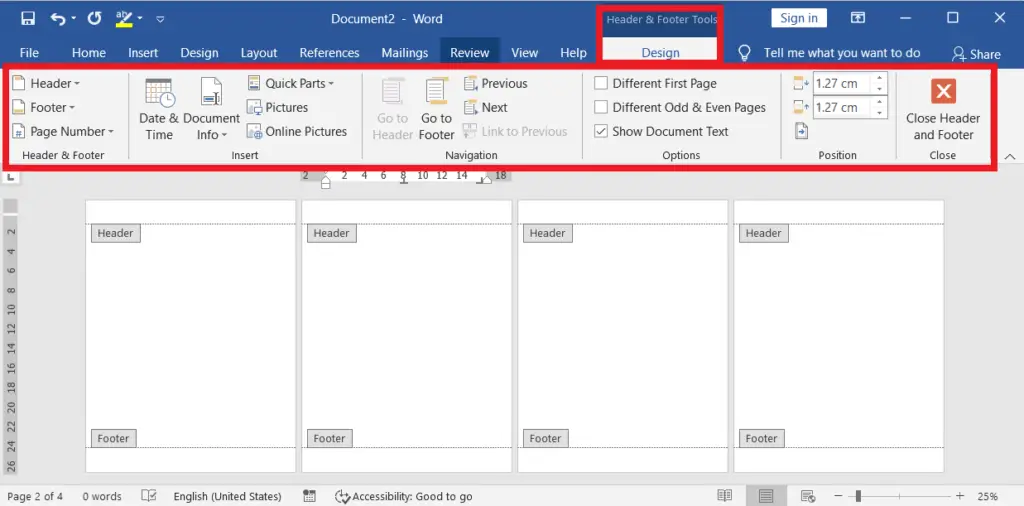
On the Header & Footer Tools / Design tab, in the Options group, click the Different Odd & Even Pages button. Change the contents of the header or footer on the first page (or delete the contents of the header or footer to use no header or footer on the first page of the document).Ĭreate a Different Header or Footer for Odd and Even Pages.If necessary, click the Show Next and Show Previous buttons on the Header & Footer Tools / Design tab to activate the First Page Header and First Page Footer areas. On the Header & Footer Tools / Design tab, in the Options group, click the Different First Page button. Double-click the header or footer area on the first page of the document.You can skip the header or footer on the first page, or create a unique header or footer for the first page of the document. To finish, double-click anywhere in the document, or on the Header & Footer Tools / Design tab, in the Header&Footer group, click Close Header and Footer.Ĭreate a Different Header or Footer for the First Page If necessary, you can align and format text in the header and footer areas, as required.To switch between the header and footer areas, use the Go to Header and Go to Footer buttons of the Header & Footer Tools / Design ribbon tab. Type text or insert graphics in the header or footer area.On the Insert tab, in the Header&Footer group, click the Header or Footer button. You can insert text or graphics into headers and footers (for example, page numbers, a company logo, the document title or file name, the author's name). On the Header & Footer Tools Design tab, in the Options group, select the check box for Different First Page.Headers and footers are the areas at the bottom or the top of each page in a document.Double click the header area of the document.

On the View tab, select the Print Layout document view.Microsoft Word 2007 and Microsoft Word 2010: It's easier to set up the pages before you start writing the paper. On page 1, Running head will remain in your first page header, and only your abbreviated title will appear on subsequent pages.Go to page 2 of your document (or if you haven't started writing it, insert a page break) and delete the phrase Running head, leaving just your abbreviated title.Close the header and footer (red x on the top right-hand side of the page).Use the backspace key to set your title to the left and then use the tab key to move the page number back to the right hand side (usually 2 tabs).Set the cursor just to the left of the number 1 and type Running head: and then your abbreviated title in all caps. Your cursor should now be at the top of page 1 in the header box.Go to the menu, at the top of the page, under Header and Footer Tools, click the box that says Different first page.Select the option you want (usually top of the page).On the toolbar that appears, choose the Page Number option.Microsoft Word 2013, click here or read on: Click on the red "X" to close the Header and Footer Tools.Tab the 2 over to the right side of the header. Type in your title or abbreviated title in all caps in front of the 2.Tab over twice and type in the numeral 1.In the Header, type Running head: and then your abbreviated title in all caps.At the top of the page, under Header and Footer Tools, click the box that says Different first page.In the Header and Footer box, click on Page Number and select the location/option you want the page number (usually top of the page, plain number 1).


 0 kommentar(er)
0 kommentar(er)
